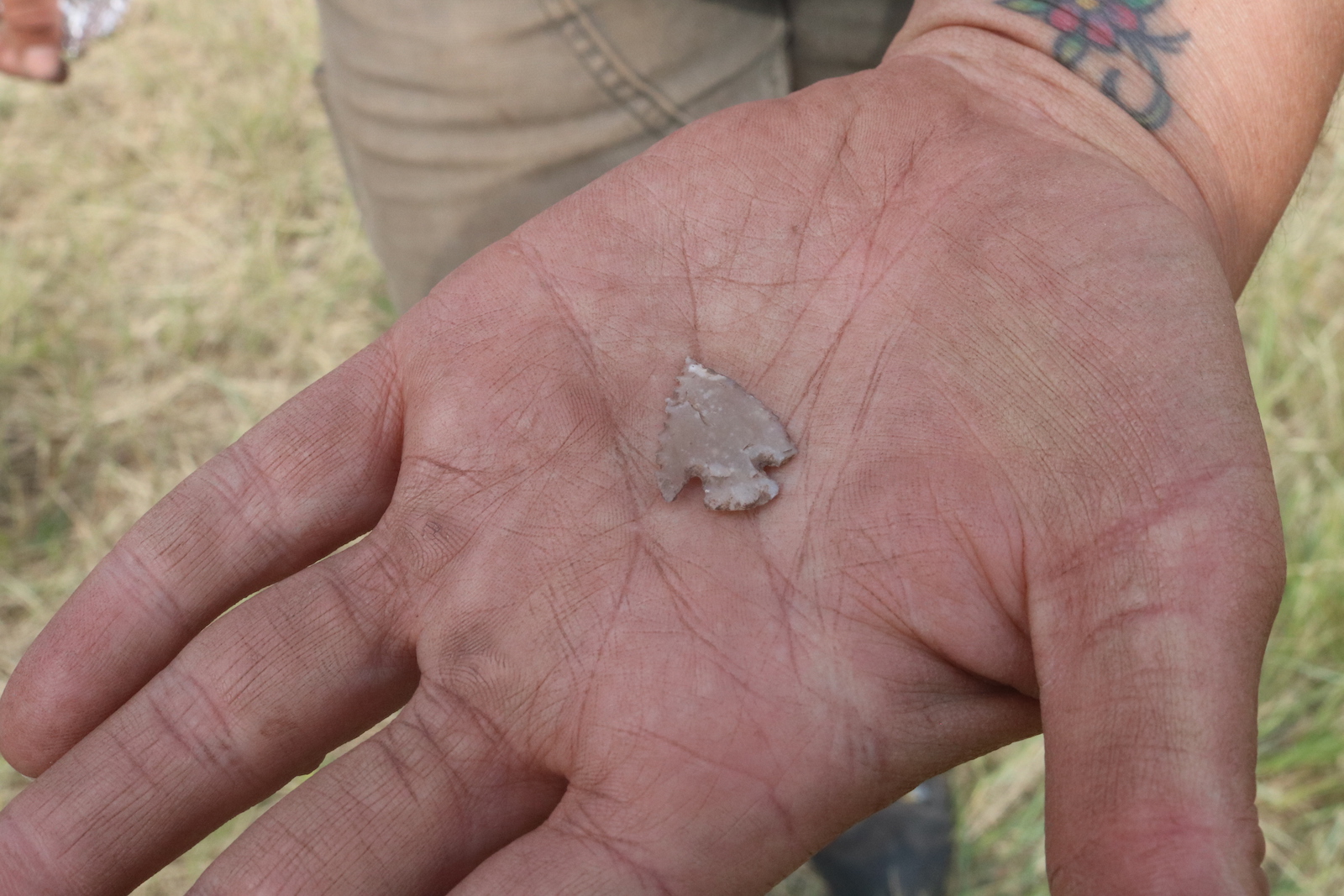The Local newsletter is your free, daily guide to life in Colorado. For locals, by locals.
Near the end of a guided hike in Jefferson County’s Apex Park, we sit down under a tent with a volunteer. She tries to explain the way archaeologists use drones to map and take measurements of excavation sites before digging even begins. It’s fascinating stuff, but our group, which consists of a half dozen eight-year-olds, their parents, some high schoolers, and one journalist, is getting a little squirmy. Concentrating can be tough when people are discovering artifacts right behind you.
We’re on a hiking tour of Magic Mountain, a camp located in the foothills near Lena Gulch in Golden. It’s just a 30-minute drive from Denver (in light traffic) to arrive at what researchers are calling one of the most important archeological sites on Colorado’s Front Range. And thanks to the Denver Museum of Nature and Science, members of the public (like our group) now have the opportunity to dig up pieces of history.

“This hands-on experience is really rare,” says Michele Koons, curator of archaeology at the DMNS and the scientist overseeing the excavation. “It’s an incredible chance to demystify archaeology.”
Magic Mountain has been excavated twice before: once in the 1950s by a PhD student from Harvard, and once by a cultural resource management firm in the 1990s. But people really started getting excited two years ago, when non-invasive studies showed further evidence of a civilization from 5000 B.C.
Those drones that the volunteer was trying to tell us about? In 2016, they used a process called photogrammetry to create 3D maps of Magic Mountain, and another process called magnetometry to find differences in the magnetic properties of the soil. The results hinted at discoveries yet to be made at the site, and a 2017 dig proved them right: The team unearthed five hearths and a roasting oven.
The roasting oven is especially exciting. Koons and her team believe it may have been in a 7,000-year-old house, so a goal for the 2018 project is to figure out the location of that house’s edges. But just as important is Koon’s other goal: to get members of the community involved. “I want to raise awareness about the history of what’s in our backyard, and get people excited about archeology like I am,” she says.
So she recruited the Paleo Culture Research Group, a nonprofit education group based in Broomfield. The PCRG takes volunteers to several digs a year in the Great Plains and southern Rocky Mountains, but research director Mark Mitchell says this is the closest to civilization they’ve ever worked—and that’s a good thing. “If these sites are destroyed by development and by the growth of the metro area, we’re all the poorer for having lost what was there,” Mitchell says. “So if we have community interest and involvement, they help us protect these sites.”
DMNS and PCRG volunteers aren’t the only ones digging. The DMNS Magic Mountain tours begin with a 200-meter hike to the site. Along the way, volunteers leading the groups stop frequently to share information about the site’s history. (The groups so far have included a mix of kids and adults, and volunteers do a solid job making the presentation interesting and accessible for both.)
But the coolest part of the hour-and-a-half long experience is the excavation. Because the artifacts are so old and delicate, participants use small trowels to scrape thin layers of dirt into a bucket, which they then sift through a sieve. It’s a different (and more accurate) sort of archeology than Indiana Jones’ dangerous adventures, but the process has its own type of drama: several projectile points (arrowheads, in layman’s terms) were discovered the same day of our tour on June 20.

Mitchell says seeing kids excited about archaeology is especially rewarding. “For some of them who are interested in math and science, they see that at work in an excavation,” he says. “And they see measurement and mapping in a real world setting, and light-bulbs go off for them.”
Adults get a kick out of the experience, too. One anonymous journalist has been talking to anyone who will listen about pretending to be an archaeologist for the day (so she’s very excited to be writing this article).
All artifacts found at the site will go to the Denver Museum of Nature and Science to be studied and eventually displayed. But with the site so close to the city, it’s worth it to get in at the ground level. Tours are available June 20–27 and July 5–14. For more information or to buy tickets, visit dmns.org.








